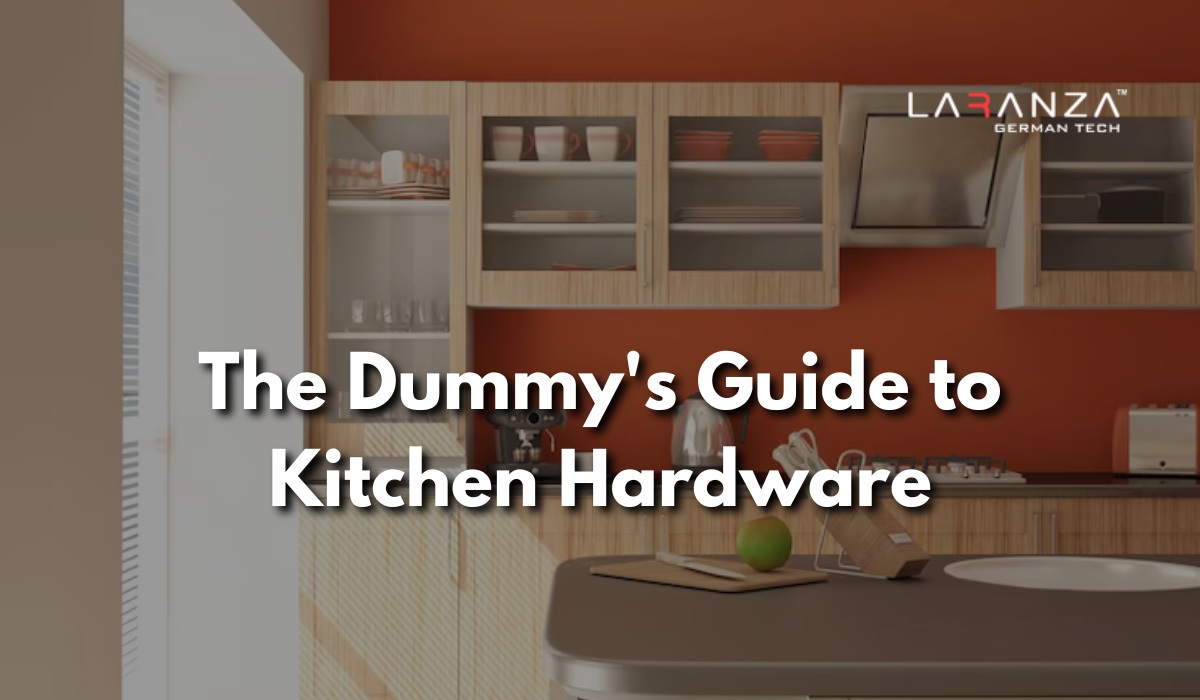When it comes to designing a kitchen, many people focus on the big-ticket items like cabinets, countertops, and appliances. However, kitchen hardware plays a crucial role in both the functionality and aesthetics of your space.
Understanding the different types of kitchen hardware and how to choose them can elevate your kitchen from ordinary to extraordinary. This guide will walk you through the basics, making it easy even for beginners to navigate the world of kitchen hardware.
What is Kitchen Hardware?
Kitchen hardware encompasses all the small fittings and fixtures that are essential for the functionality and aesthetics of your kitchen. These include cabinet handles and knobs, hinges, drawer slides, pull-out systems, and more. Each piece of hardware serves a specific purpose, contributing to the overall efficiency and look of your kitchen.
Types of Kitchen Hardware
1. Cabinet Handles and Knobs
Cabinet handles and knobs are the most visible hardware in your kitchen. They come in a variety of styles, materials, and finishes to match any design aesthetic. From sleek and modern to vintage and rustic, there’s a handle or knob to suit every taste.
-
Materials: Common materials include stainless steel, brass, bronze, ceramic, and glass.
-
Styles: Options range from minimalist bar handles to ornate vintage knobs.
2. Hinges
Hinges are crucial for the smooth operation of your cabinet doors. There are several types of hinges, each suited for different types of cabinets.
-
Concealed Hinges: These are hidden from view when the cabinet door is closed, providing a clean look.
-
Exposed Hinges: These are visible and can add a decorative element to your cabinets.
3. Drawer Slides
Drawer slides determine how smoothly and quietly your drawers open and close. Quality drawer slides can make a significant difference in the functionality of your kitchen.
-
Side-Mounted Slides: Attached to the sides of the drawer and cabinet.
-
Under-Mounted Slides: Attached to the bottom of the drawer, hidden from view.
4. Pull-Out Systems
Pull-out systems maximize your kitchen’s storage efficiency. They include pull-out shelves, spice racks, trash bins, and more. These systems make it easier to access items stored in the back of your cabinets.
-
Pull-Out Shelves: Great for deep cabinets where items can get lost at the back.
-
Pull-Out Trash Bins: Keep trash out of sight but easily accessible.
5. Soft-Close Mechanisms
Soft-close mechanisms can be added to both drawers and cabinet doors to ensure they close quietly and gently. This feature not only adds a touch of luxury but also prolongs the life of your kitchen hardware by reducing the impact of slamming.
Choosing the Right Kitchen Hardware
1. Consider Your Kitchen Style
The style of your kitchen will heavily influence your choice of hardware. For a modern kitchen, opt for sleek, minimalist handles and concealed hinges. For a more traditional or rustic kitchen, ornate knobs and exposed hinges can add character.
2. Think About Functionality
Functionality is key when choosing kitchen hardware. Ensure that handles are easy to grip, and that drawers slide smoothly. Pull-out systems should be easy to operate and access. Consider soft-close mechanisms for a quieter, more refined kitchen experience.
3. Material and Finish
The material and finish of your hardware should complement the overall design of your kitchen. Stainless steel and chrome are popular for modern kitchens, while brass and bronze are favored for a vintage look. Make sure the finish matches or complements other fixtures in your kitchen, such as faucets and lighting.
4. Quality and Durability
Investing in high-quality hardware is essential for the longevity of your kitchen. Premium materials and construction ensure that your hardware will withstand daily use. Laranza offers a wide range of premium kitchen and wardrobe hardware and accessories throughout India, ensuring you get both quality and style.
Installation Tips
-
Measure Carefully: Accurate measurements are crucial. Make sure your hardware fits your cabinets and drawers perfectly.
-
Follow Instructions: Always follow the manufacturer’s installation instructions for the best results.
-
Use the Right Tools: Ensure you have the correct tools for installation to avoid damaging your cabinets or hardware.
-
Test Before Finalizing: Test the placement and function of your hardware before finalizing the installation to make any necessary adjustments.
FAQ Section
Q1. What is the most durable material for kitchen hardware?
Stainless steel is highly durable and resistant to rust and corrosion, making it a great choice for kitchen hardware.
Q2. Can I mix different finishes in my kitchen hardware?
Yes, mixing finishes can add visual interest and contrast. However, try to keep a consistent theme to avoid a disjointed look.
Q3. How do I choose the right size handles for my cabinets?
Consider the size of your cabinets and drawers. Larger cabinets may require larger handles for proportion, while smaller cabinets look best with smaller handles or knobs.
Q4. Is it difficult to install kitchen hardware myself?
With the right tools and instructions, installing kitchen hardware can be a DIY project. However, for more complex installations, you may want to hire a professional.
Q5. How do I maintain my kitchen hardware?
Regular cleaning with a mild detergent and soft cloth will keep your hardware looking new. Avoid abrasive cleaners that can damage the finish.




